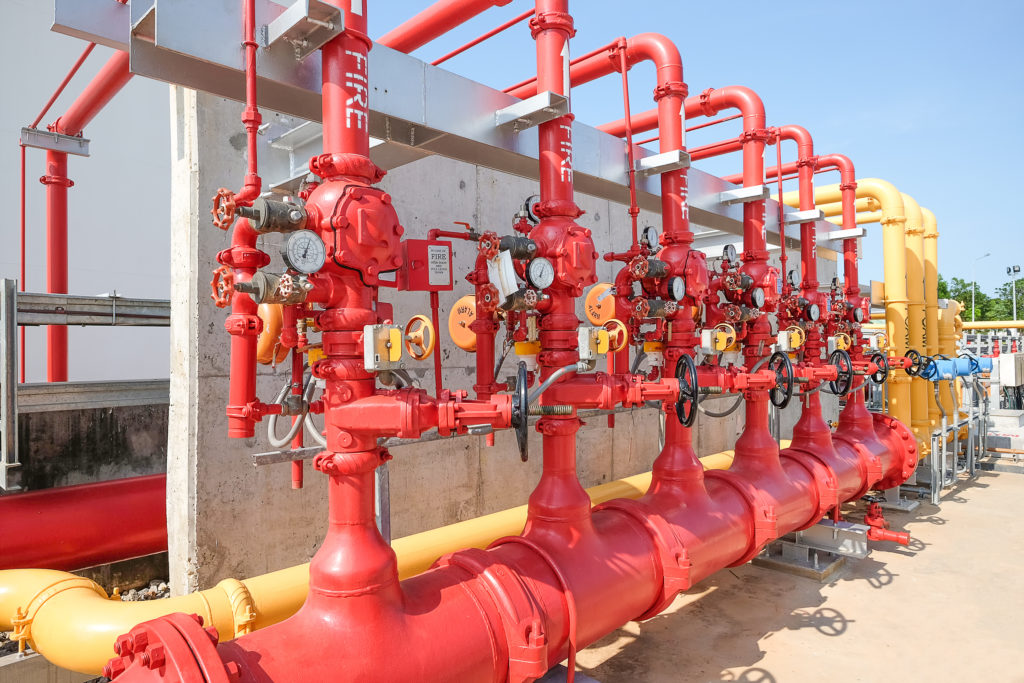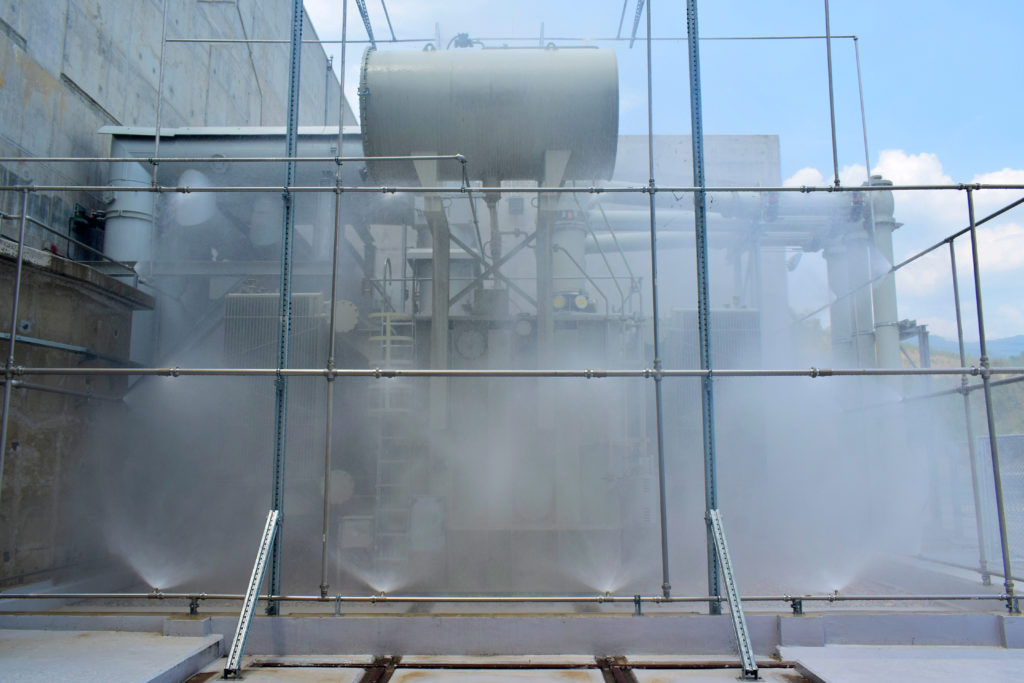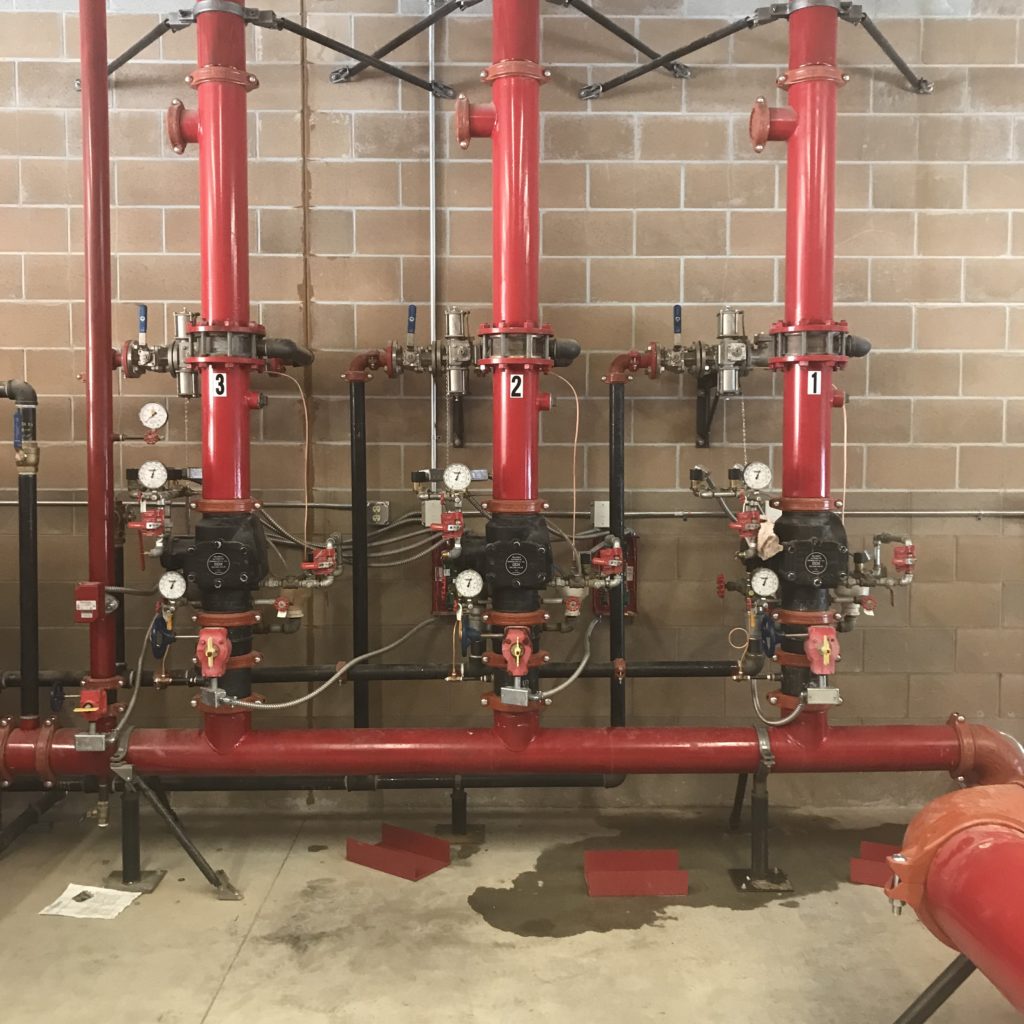In my two previous blogs, we first discussed wet sprinkler systems (Wet), the most basic and most common fire system type followed by dry sprinkler systems (Dry), which are a bit more complicated. Ratcheting up another level, in this last edition on sprinkler systems, let’s take a look together at preaction and deluge systems. These can be complex and variable, so we’ll operate at the 30,000 ft level.
Though preaction and deluge systems are very closely related, these cousins are found in different environments. Preaction systems are most often used indoors to protect environments where any non-fire water intrusion would be problematic, such as larger computer server rooms, data centers, medical imaging equipment, and frozen food warehouses. Deluge systems (I am lumping together deluge sprinkler and deluge water spray) are most often protecting outdoor special hazards, such as chemical plant process structures or large electrical transformers. Preaction and deluge systems share these traits:
- The system piping is void of water in the set (normal, stand-by) state
- Deluge and preaction valves are tripped by one of several detection options
- Once the deluge or preaction valve trips, water is sent throughout the system piping.
In a tripped deluge sprinkler system, water flows from all sprinklers, because they are open.
In a tripped preaction sprinkler system, an individual sprinkler does not flow water except where there is enough heat to break the heat-sensitive element in that head. Water will only flow from activated sprinklers.
Detection systems fit into one of two categories: electric and pneumatic.
Electric detection systems can include smoke detection, (electric) heat detection, and flame detection. Electric detection systems need a control and release panel.
Pneumatic detection systems most often consist of pilot sprinklers, though oddities such as the Viking thermostatic release or the practically obsolete heat-actuated devices (HADs) are out there (comment if you know what a Suprotex is or have seen one!).
Possible Issues
The possible failure areas of other systems will also apply to deluge and preaction sprinkler systems: control valves closed, obstructions, issues in the system, installation, or deficiencies with inspection, testing, and maintenance. Preaction systems have the same vulnerability to scaling obstructions that dry systems do.
Outdoor deluge systems can fall victim to freeze damage and corrosion from the environment. The first places attacked are often at joints where there could be a low point or exposed threads. Performance issues can result from individual clogged sprinklers or sections of piping.
Deluge and preaction systems can both have issues relating to their detection and release systems.
Because deluge systems move a large flow of water that can entrain debris with it, those that are supplied from open water sources or have small-orifice nozzles can be equipped with a mainline strainer ahead of the system to catch debris before it can clog nozzles. In my experience, mainline strainers are often not maintained or inspected well.
With these complex systems, they key to optimal performance is inspection, testing and maintenance of all components.
Case Study: System rendered out of service by inactivation of solenoid
On systems which are electrically tripped, sometimes the coil is removed from the solenoid during inspection, maintenance or testing to prevent the valve from tripping and sending water into the piping. If not restored at the completion of such work, the system is non-functional.
During a routine visual inspection by an outside party, exactly this situation was found. Visually, every control valve and trim valve was in the correct position. However, with the coil removed from the solenoid, the valve would have not tripped automatically in a fire situation.
Case Study: Deluge Systems incorrectly maintained
There was once a chemical plant with several deluge systems protecting outdoor process areas and tanks. Inadequate observations during annual trip tests meant that issues with sprinklers, nozzles and piping went undiscovered and unaddressed. Fortunately, this story does not include a fire occurring while the systems were in such disrepair. During a session of trip testing with thorough observations, tens of thousands of dollars of accumulated freeze damage, corrosion damage, clogged sprinklers and clogged water spray nozzles were discovered.
Amy Anderson, PE has a Bachelor of Science in Chemical Engineering from Clemson University. Amy has over 20 years of engineering experience including property loss prevention engineering specializing in fire protection, chemical and pharmaceutical facilities. She has partnered with clients to identify, assess, avoid, and reduce risk at their commercial and industrial properties. Additionally, she has assisted with the development of building and fire protection specifications, reviewed plans and performed site visits. She has reviewed project documents for compliance with applicable standards – construction, fire protection, process, and combustible dust hazards. Amy is a member of the National Association of Fire Investigators, the Society of Fire Protection Engineers, the National Fire Protection Association and the American Institute of Chemical Engineers.






